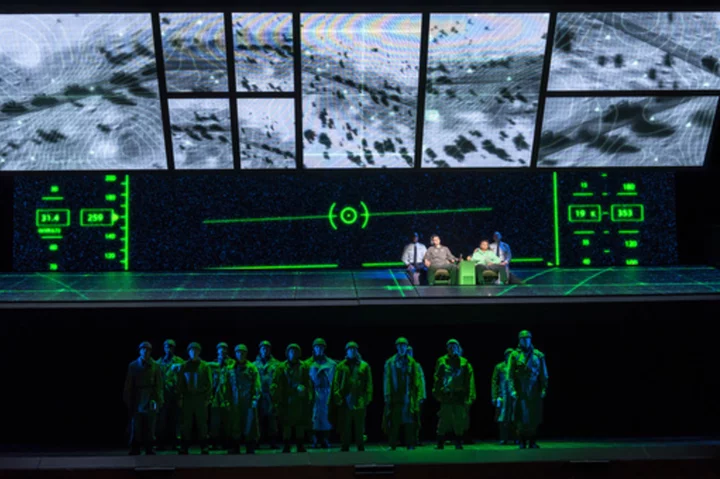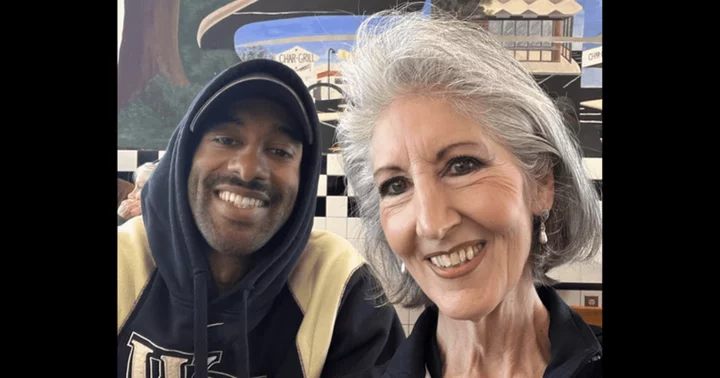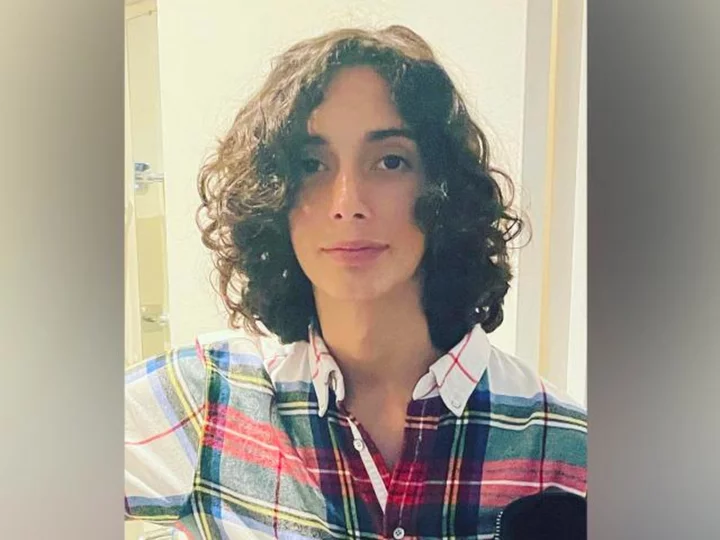WASHINGTON (AP) — Nearly 10 years after it was first imagined as an opera, “Grounded” is ready to take flight.
With music by Jeanine Tesori and a libretto adapted by George Brant from his own play, “Grounded” tells the story of an F-16 fighter pilot who becomes pregnant and leaves the service. When she re-enlists she is assigned to a trailer in the Nevada desert, directing unmanned drone attacks on terrorists thousands of miles away. Gradually her personality fractures under the stress of the job until she can no longer separate her private from professional life.
The opera has its world premiere at the Washington National Opera on Saturday, with performances continuing through Nov. 13. And next fall it will open the season at the Metropolitan Opera, which commissioned the work.
That commission sprang from the fact that back in 2014 Paul Cremo, the Met’s dramaturg, happened to see Brant’s one-woman play at a tiny theater in Manhattan.
It’s Cremo’s job to shepherd the creation of new work as part of the company’s push to attract younger, more diverse audiences. At the time, he was looking for a subject for Tesori, a composer then best known for musicals like “Thoroughly Modern Millie” and “Fun Home.”
“We had signed up Jeanine to our new works project and it wasn’t coming together, time was passing and I thought we’ve gotta find something for her,” Cremo said.
He was struck by the operatic potential of the play, not least because its heroine is a strong, capable woman in a man’s world.
“It’s not a story about, Oh it’s really hard to be a woman in a man’s world,” Cremo said. “No. She’s as good as or better than the men. But it’s about her own standards, judgments of herself. That’s the struggle.”
Brant said when Cremo first asked if he’d be interested in helping adapt his play, “I was thinking maybe a chamber opera on a less grand scale.”
But Cremo envisioned something more, given the size of the Met, with its vast stage and 3,800 seats. “The question was, can this one-woman show be turned into a full-fledged opera with multiple characters and a chorus and all the things an opera needs,” he said.
Once Tesori came on board, she and Brant set to work to expand the play while keeping the basic story intact.
The main character — identified in the play only as ”the pilot” — was given a name, Jess. They also created roles for characters we only hear her talk about, like her husband Eric and her commander. Crucially, they added a character called Also Jess, who Brant said functions as “kind of her alter ego” as she starts to experience PTSD.
The creative team, which soon included director Michael Mayer, worked steadily for the next several years, even during the pandemic lockdown.
“They had these very productive Zoom sessions,” Cremo said, in which Jeanine would play the computer rendition of her score and they would discuss it scene by scene.”
A key element of the production is the set, designed by Mimi Lien. It consists of two enormous screens made from hundreds of individual LED panels across the floor and ceiling.
“These have become common in huge stadium concerts, but they haven’t been used on this scale before on an opera stage,” Lien said. “That’s what’s exciting about it.”
The panels are mapped with software that allows for real-time video and projections. At time, radar-like images displayed on the back wall give the audience the sense of what remote warfare feels like for Jess as she sits isolated in her trailer on a platform high above the stage.
“Since the subject matter says so much about the power of technology in our lives, I wanted the set to feel like a machine surrounding her, enclosing her, without a human element,” Lien said.
For the role of Jess, the Met brought mezzo-soprano Emily D’Angelo aboard early in the process so Tesori could work with her voice in mind as she wrote the score.
It’s by far the highest profile assignment for the Canadian singer, who at age 28 has risen to stardom by virtue of her commanding presence and vocal authority. Those are qualities essential to embodying the fearless pilot who flourishes in a male-dominated world.
“To sing this part, I think you really have to have a toughness,” D’Angelo said. “Jess’s tenacity and strength are things you have to really draw from within yourself. You can’t be faking it. It has to come from somewhere very deep and very real.”
Vocally, she said, Tesori’s music is “as dynamic as Jess is as a character. Jeanine has used every aspect of the voice to really show Jess to the greatest and most honest extent.”
Daniela Candillari, who will conduct the premiere, said Tesori has scored the opera for “a Puccini-size orchestra with extra instruments and a large percussion battery.” She said the eclectic score has moments of jazz, blues, military ceremonial brass and “what sounds like American folk music.
“Every character is defined by their vocal writing and their specific musical language,” Candillari said. She gave as an example a scene at Eric’s ranch in Wyoming where “oboes and clarinets play triplets, suggesting someone riding a horse.”
The Met chose the WNO to stage the world premiere as a kind of out-of-town tryout ahead of “Grounded’s” arrival in New York. But the arrangement initially led to some unwelcome controversy.
When the company announced the production, its website described General Dynamics as the opera’s “presenting sponsor.” Critics assailed the idea of a work about the military being funded by a defense contractor, and the company rewrote its website to refer to General Dynamics as a “WNO season sponsor.”
And a note on the site now reads: “For the sake of clarity, no sponsor or supporter of WNO had any involvement in the creation of ‘Grounded’ or in the contents of its libretto.”









